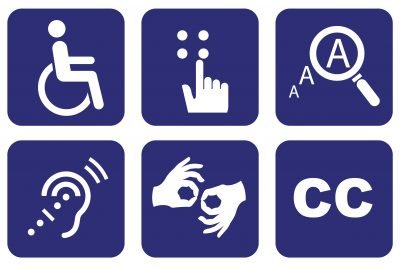By Kyann Flint
The world of work is generally not built for the disability community. Federal laws guarantee the right to work and the right to accommodations, but modern-day jobs do not always give each person an opportunity to succeed. Many workers with disabilities must try harder to make the job fit, and some employers see accommodations as extra expenses or special rather than an investment for equal opportunity.
I have experienced this firsthand. My first employer told me that because of my legal blindness, he did not know what he would have me do. No empathy. No innovation. No Universal Design.
Universal Design is a plan for buildings, products, or environments that are accessible to all people, regardless of age, disability, or other factors. Universal Design accommodates everyone, reducing the need for anyone to need or request accommodations. My own opportunity to build a career was boosted by having a boss who is also disabled at an agency that incorporates Universal Design into our everyday work.
COVID-19 has reshaped many jobs and created opportunities for employers to see how Universal Design can benefit everyone. For example, the disability community has long advocated for work-from-home. Until organizations were driven by the need to keep everyone safe, the request for this accommodation did not seem like a good choice for many employers. Many now see the benefit of a work-from-home option.
Because I cannot drive, working from home benefited me before the home office became common during COVID-19. My colleagues and I were already comfortable with Zoom and knew how to help our community adapt to using that online meeting platform and other tools to support the need for almost everyone to work from home.
Clearly, working from home is not just a disability accommodation but also provides access to jobs for more people. This change represents a benefit of Universal Design.
Curb cuts are another example of Universal Design. Curb cuts are built with wheelchair accessibility in mind, but they benefit everyone, making it easier for parents with strollers, people with leg injuries and anyone who might trip or fall because of a misstep over a curb. Ramps, elevators, and accessible websites are other examples of innovations that support everyone.
Better access for everyone means fewer people need to ask for accommodations. People with disabilities feel included. In a world built with Universal Design, disability is not a problem. When society gives people with disabilities access to work, we are all better off.
A lesson learned during COVID-19 is that accessibility is an investment, not an expense. Universal Design an everyday thing that creates equity and inclusion for all.
About the author: Kyann Flint, Director of Accessibility for Wandke Consulting, is a passionate advocate for the disability community. As a person with a disability, she strives to educate society on how social barriers, like ignorance and stereotypes, limit the disability community. Kyann loves coffee and travel.

